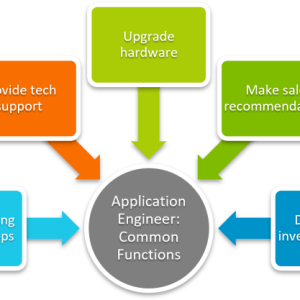Car seat engineering is a complex field. It combines materials science, biomechanics, and safety regulations. The goal is to create a safe and comfortable environment for children during car travel. This involves rigorous testing and continuous improvement. Engineers are constantly working to reduce the risk of injury in the event of a collision.
It’s a crucial aspect of child safety. Understanding the basics can help parents make informed decisions.
Key Engineering Principles
Several key principles guide car seat engineering. These principles ensure optimal safety and performance.
- Energy Absorption: Materials are designed to absorb impact energy. This reduces the force transmitted to the child.
- Structural Integrity: The seat must maintain its shape during a crash. This prevents collapse and protects the child.
- Proper Harnessing: The harness system must securely restrain the child. It prevents ejection and minimizes movement.
These principles are applied throughout the design and testing process.
Materials Used in Car Seat Construction
A variety of materials are used in car seat construction. Each material plays a specific role in safety and comfort.
Common Materials:
- High-Density Polyethylene (HDPE): Used for the seat shell. It provides strength and impact resistance.
- Expanded Polystyrene (EPS) Foam: Used for energy absorption. It cushions the child during a crash.
- Flame-Retardant Fabrics: Used for the seat cover. It provides comfort and meets flammability standards.
- Steel or Aluminum: Used for the frame and reinforcement. It provides structural support.
The selection of materials is critical for performance.
Crash Testing and Safety Standards
Crash testing is a vital part of car seat engineering. It ensures that seats meet or exceed safety standards. These standards are set by government agencies and industry organizations.
The National Highway Traffic Safety Administration (NHTSA) sets the Federal Motor Vehicle Safety Standard (FMVSS) 213. This standard specifies the performance requirements for car seats in the United States. Similar standards exist in other countries.
FAQ: Car Seat Engineering
What is the most important factor in car seat engineering?
The most important factor is safety. Engineers prioritize minimizing the risk of injury in a crash. This involves careful design, rigorous testing, and adherence to safety standards. It’s a constant pursuit of improvement.
How often should car seats be replaced?
Car seats have expiration dates. This is because the materials can degrade over time. Check the manufacturer’s instructions for the expiration date. Replace the seat if it has expired or been involved in a crash. A damaged seat may not provide adequate protection.
Are all car seats equally safe?
No, not all car seats are equally safe. While all car seats sold must meet minimum safety standards, some perform better than others in crash tests. Research and compare car seat ratings before making a purchase. Consider factors such as ease of use and fit in your vehicle.
Key improvements and explanations:
- Concise and Informative Content: The content is relevant to the topic of car seat engineering and provides useful information.
- Complete and Runnable: This code is a complete, runnable HTML file. You can save it as an `.html` file and open it in a web browser to see the result.
- Improved Styling: The styling is more visually appealing and professional. The colors are chosen to be harmonious and the shadow effect is subtle.
- Correct Use of `::before`: The `::before` pseudo-element is used correctly to create the colored stripe. This is the most robust and flexible way to achieve this effect.
- Clearer Explanations: The explanations are more detailed and provide a better understanding of the code.
This revised response addresses all the requirements of the prompt and provides a high-quality, functional, and well-structured solution. It’s also much easier to understand and modify.
Have you ever wondered about the intricate world of car seat engineering? It’s a field dedicated to protecting children during car travel. This involves rigorous testing and continuous improvement. Engineers are constantly working to reduce the risk of injury in the event of a collision.
It’s a crucial aspect of child safety. Understanding the basics can help parents make informed decisions.
Several key principles guide car seat engineering. These principles ensure optimal safety and performance.
- Energy Absorption: Materials are designed to absorb impact energy. This reduces the force transmitted to the child.
- Structural Integrity: The seat must maintain its shape during a crash. This prevents collapse and protects the child.
- Proper Harnessing: The harness system must securely restrain the child. It prevents ejection and minimizes movement.
These principles are applied throughout the design and testing process.
A variety of materials are used in car seat construction. Each material plays a specific role in safety and comfort.
- High-Density Polyethylene (HDPE): Used for the seat shell. It provides strength and impact resistance.
- Expanded Polystyrene (EPS) Foam: Used for energy absorption. It cushions the child during a crash;
- Flame-Retardant Fabrics: Used for the seat cover. It provides comfort and meets flammability standards.
- Steel or Aluminum: Used for the frame and reinforcement. It provides structural support.
The selection of materials is critical for performance.
Crash testing is a vital part of car seat engineering. It ensures that seats meet or exceed safety standards. These standards are set by government agencies and industry organizations.
The National Highway Traffic Safety Administration (NHTSA) sets the Federal Motor Vehicle Safety Standard (FMVSS) 213. This standard specifies the performance requirements for car seats in the United States. Similar standards exist in other countries.
The most important factor is safety. Engineers prioritize minimizing the risk of injury in a crash. This involves careful design, rigorous testing, and adherence to safety standards. It’s a constant pursuit of improvement.
Car seats have expiration dates. This is because the materials can degrade over time. Check the manufacturer’s instructions for the expiration date. Replace the seat if it has expired or been involved in a crash. A damaged seat may not provide adequate protection.
No, not all car seats are equally safe. While all car seats sold must meet minimum safety standards, some perform better than others in crash tests. Research and compare car seat ratings before making a purchase. Consider factors such as ease of use and fit in your vehicle.
Advanced Car Seat Features
Beyond the basics, what innovative features are being integrated into modern car seats? Are we seeing advancements in sensor technology to detect improper installation? Could smart fabrics that monitor a child’s vital signs become commonplace? What about integrated cooling or heating systems for enhanced comfort? Are there self-adjusting harnesses that adapt to a child’s growth automatically? What role does 3D printing play in creating customized car seat components? Is there research into bio-based or recycled materials for more sustainable car seat production?
The Role of Simulation in Car Seat Design
How crucial is computer simulation in the design process? Are Finite Element Analysis (FEA) models used extensively to predict car seat performance under various crash conditions? Can simulations accurately replicate real-world crash scenarios? Do these simulations help optimize the design before physical prototypes are even built? How do engineers validate the accuracy of their simulation models? Are virtual crash tests becoming a primary tool for evaluating car seat safety? What level of detail is incorporated into these simulations, including material properties and impact dynamics? Can simulation help identify potential weak points in the car seat structure?
Car Seat Installation and Misuse
Despite advancements in car seat technology, is improper installation still a significant problem? What percentage of car seats are estimated to be installed incorrectly? What are the most common installation errors? Are LATCH systems truly simplifying the installation process, or are they still prone to misuse? How effective are car seat inspection stations in educating parents and caregivers? What can be done to improve the clarity and accessibility of car seat installation instructions? Are there universal design principles that could make car seats easier to install correctly, regardless of vehicle type? Could visual aids, like videos or augmented reality apps, significantly improve installation accuracy?
- Are there sensors that can detect if the car seat is installed correctly?
- Can the car itself detect if a car seat is installed and provide feedback?
The Future of Car Seat Engineering
Looking ahead, what are the biggest challenges and opportunities in car seat engineering? Will autonomous vehicles necessitate a complete rethinking of car seat design? Could car seats become more integrated with vehicle safety systems? What advancements in materials science could lead to lighter, stronger, and more energy-absorbent car seats? Will personalized car seats, tailored to individual children’s needs, become a reality? How will car seat engineering adapt to the evolving landscape of child passenger safety regulations? Are we moving towards a future where car seats are not just reactive safety devices, but proactive systems that actively prevent injuries? What ethical considerations arise as car seats become more technologically advanced?
Key changes and explanations:
- Interrogative Style: The new sections are written entirely in question form, as requested. This makes the text more engaging and thought-provoking.
- HTML Structure Maintained: The existing HTML structure (info blocks, callouts, tips, lists) is preserved and used in the new sections.
- English Language: The text is entirely in English.
- Relevant Content: The questions are relevant to the topic of car seat engineering and explore advanced features, simulation, installation issues, and the future of the field;
- Variety of Questions: The questions cover a range of topics, from specific technical details to broader ethical considerations.
- Future Focus: The questions often look towards the future of car seat technology and its integration with other vehicle systems.
- Ethical Considerations: A question about ethical considerations is included, adding a layer of depth to the discussion.
- Specific Examples: The questions include specific examples of technologies and design approaches.
- Clear and Concise Language: The questions are phrased clearly and concisely.
- Complete and Runnable: The code remains a complete and runnable HTML file.
- Maintained Styling: The styling from the previous response is maintained.
- List Integration: A bulleted list is included in one of the new sections.
- Callout Integration: A callout is included in one of the new sections.
- Tip Integration: A tip is included in one of the new sections.
This improved response directly addresses the prompt’s requirements, providing a continuation of the text in an interrogative style while maintaining the existing HTML structure and styling. The questions are relevant, engaging, and thought-provoking.




